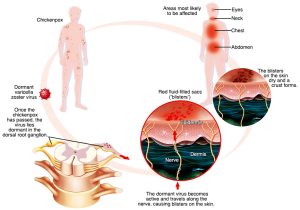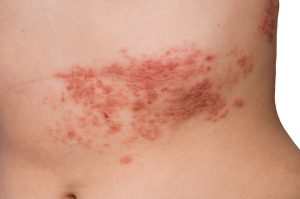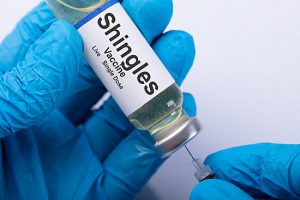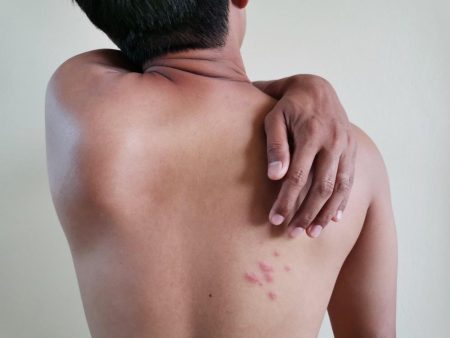In the past few months, we have had two separate clients present with back pain that has, upon assessment, turned out to be shingles. In light of this, I thought it was important to discuss what shingles is, how it presents and what treatment (and prevention) options are available.
A painful viral infection:
Occasionally, our bodies can have the reemergence of dormant viruses. One example of this is shingles, a painful condition caused by the varicella-zoster virus. This virus belongs to the herpes virus family and is also responsible for causing chickenpox. After an individual recovers from chickenpox, the virus remains dormant, situated in the nerve cells near the spinal cord and brain. If the immune system gets weak over time due to factors like stress, certain medical conditions or stressful events, the virus can reactivate and cause shingles.

Symptoms:
The main symptom of shingles is a painful rash. This usually appears in a band on one side of the body. It will often wrap around the torso. This rash is often accompanied by symptoms such as:
- Tingling.
- Itching.
- A Burning sensation.
Before the rash develops, the person might experience flu-like symptoms, including fever, headache, and fatigue.
As the rash develops, it forms fluid-filled blisters that eventually burst and form a crusted layer. The rash can take several weeks to heal completely. Although shingles most commonly occurs on the torso, it can also affect other parts of the body, including the face and eyes.

Postherpetic Neuralgia:
For many individuals, the pain associated with shingles continues with a condition known as postherpetic neuralgia (PHN). This causes persistent and severe pain in the area where the shingles rash occurred. This pain can be debilitating and last for months or even years, significantly affecting the person’s quality of life.
Treatment and management:
Like many illnesses, early intervention is key to effective management. If you suspect you have shingles, it’s important to consult a healthcare professional promptly. Antiviral medications can help reduce the severity and duration of the outbreak. They need to be taken within the first 72 hours of the rash’s appearance. Pain relievers, anti-inflammatory drugs, and topical creams may also be recommended to alleviate discomfort.
For individuals experiencing PHN, various treatments are available, including pain medications, anticonvulsants, and certain antidepressants. Always speak to your GP regarding the best management for you and your symptoms.
Prevention – vaccination:
The best defense against shingles is prevention via vaccination. This reduces the risk of developing shingles and also minimises the chances of experiencing severe pain if the virus reactivates. The Australian Immunisation Handbook recommends shingles vaccination for specific groups including:
- Adults aged 60 years and over.
- Adults aged 50 years and over who live in the same household as someone who has a weakened immune system.

For more information, visit: https://www.knowshingles.com.au
~ Ali Minichiello
Physiotherapist
You may find these other PMPP blogs interesting:
https://portmelbournephysio.com.au/pain-the-good-and-the-bad-2/
https://portmelbournephysio.com.au/stress-management-2/
https://portmelbournephysio.com.au/older-persons-health/

